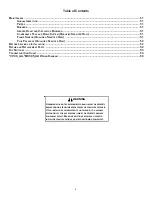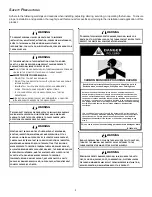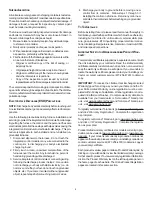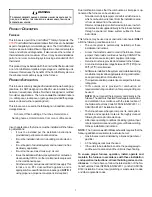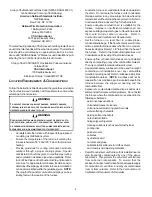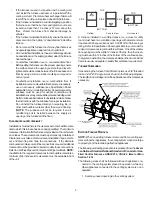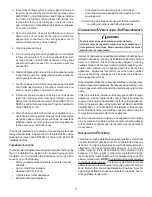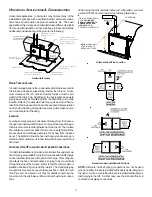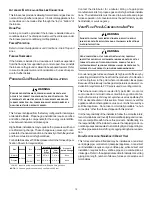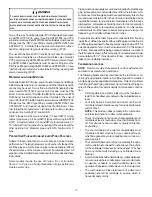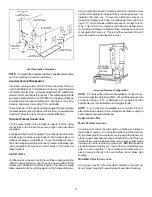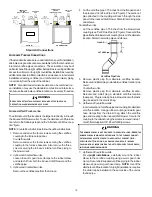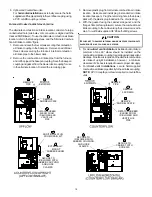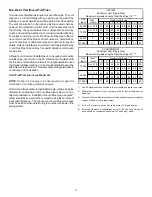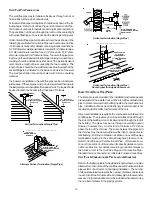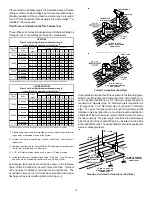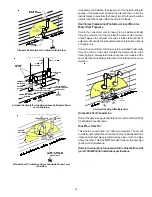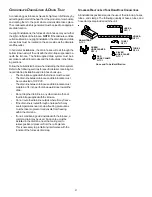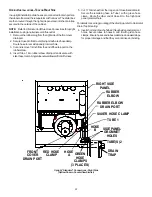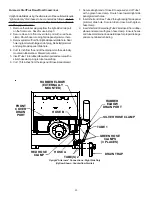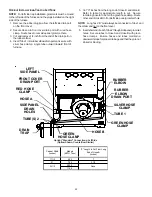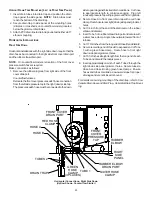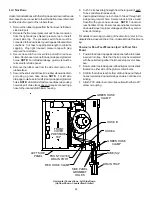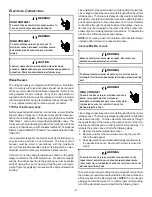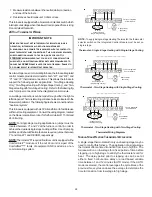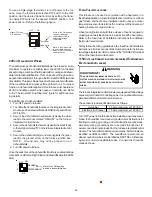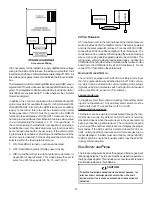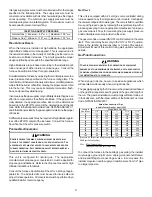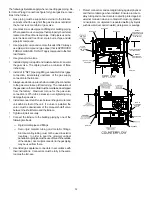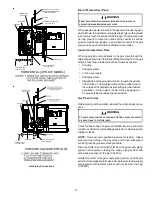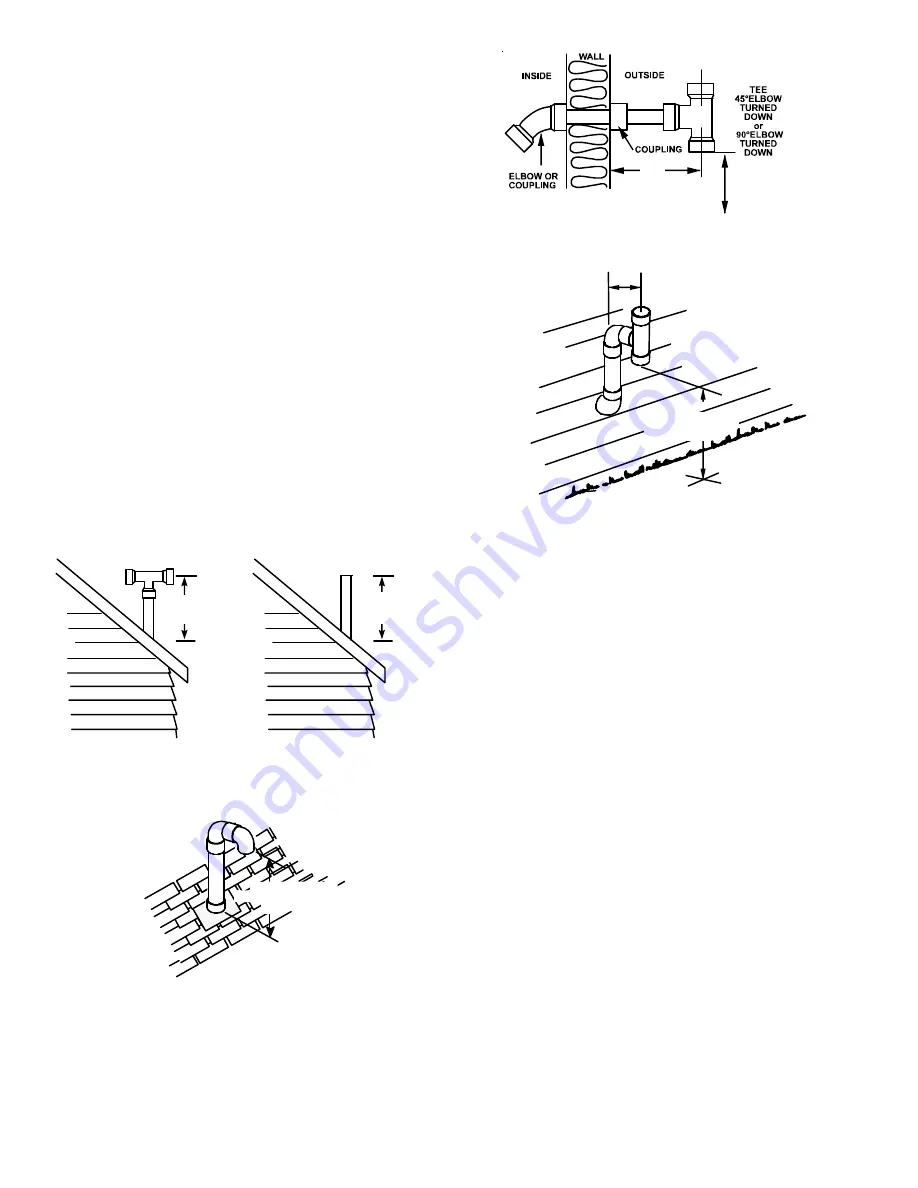
18
V
ENT
/F
LUE
P
IPE
T
ERMINATIONS
The vent/flue pipe may terminate vertically, as through a roof, or
horizontally, as through an outside wall.
Vertical vent/flue pipe terminations should be as shown in the fol-
lowing figure. Refer to
Vent/Flue Pipe and Combustion Air Pipe -
Termination Locations
for details concerning location restrictions.
The penetration of the vent through the roof must be sealed tight
with proper flashing such as is used with a plastic plumbing vent.
Horizontal vent/flue pipe terminations should be as shown in the
following figure. Refer to
Vent/Flue Pipe and Combustion Air Pipe
- Termination Locations
for details concerning location restrictions.
A 2 3/8” diameter wall penetration is required for 2” diameter pipe.
A 3” diameter hole is required for a 2 1/2” pipe and a 3 1/2” diam-
eter hole is required for 3” diameter pipe. To secure the pipe pass-
ing through the wall and prohibit damage to piping connections, a
coupling should be installed on either side of the wall and solvent
cemented to a length of pipe connecting the two couplings. The
length of pipe should be the wall thickness plus the depth of the
socket fittings to be installed on the inside and outside of the wall.
The wall penetration should be sealed with silicone caulking
material.
In a basement installation, the vent/flue pipe can be run between
joist spaces. If the vent pipe must go below a joist and then up into
the last joist space to penetrate the header, two 45° elbows should
be used to reach the header rather than two 90° elbows.
TEE (OPTIONAL)
12 " Min To Roof
Or Highest Anticipated
Snow Level
12 " Min To Roof
Or Highest Anticipated
Snow Level
Vertical Termination (Single Pipe)
_______________________
12" MIN. TO ROOF
OR HIGHEST ANTICIPATED
SNOW LEVEL
90º
MEDIUM RADIUS
ELBOWS
or 45º
Alternate Vertical Termination (Single Pipe)
MIN.
12"
FROM
WALL
12" TO GROUND OR
HIGHEST ANTICIPATED
SNOW LEVEL
Horizontal Termination (Single Pipe)
_______________________
VENT/FLUE TEE
45° ELBOW
TURNED DOWN
or
90° ELBOW TURNED
DOWN
12" MIN. ABOVE
HIGHEST ANTICIPATED
SNOW LEVEL
12" MIN.
Horizontal Termination (Single Pipe)
Above Highest Anticipated Snow Level
D
IRECT
V
ENT
(D
UAL
P
IPE
) P
IPING
The inlet air screens provided in the installation instruction packet
are available for the installer to use in the inlet of the combustion air
pipe to prevent animals from building nests in the combustion air
pipe. Installation of screens, while strongly recommended, is not
required and will not affect performance of the unit.
Direct vent
installations require both a combustion air intake and a
vent/flue pipe. The pipes may be run horizontally and exit through
the side of the building or run vertically and exit through the roof of
the building. The pipes may be run through an existing
unused
chimney; however, they must extend a minimum of 12 inches
above the top of the chimney. The space between the pipes and
the chimney must be closed with a weather tight, corrosion resis-
tant flashing. Both the combustion air intake and a vent/flue pipe
terminations must be in the same atmospheric pressure zone.
Refer to
Vent/Flue and Combustion Air Pipe - Termination Loca-
tions
or
Concentric Vent Termination
for specific details on termi-
nation construction. For details concerning connection of pipes to
the furnace, refer to the
Vent/Flue Pipe and Combustion Pipe -
Standard Furnace Connections
or
Alternate Furnace Connections.
V
ENT
/F
LUE
&C
OMBUSTION
A
IR
P
IPE
L
ENGTHS
&D
IAMETERS
Refer to the following table for applicable length, elbows, and pipe
diameter for construction of the vent/flue and combustion air intake
pipe systems of a direct vent (dual pipe) installation. The number
of elbows tabulated represents the number of elbows and/or tees
in each (Vent/Flue & Combustion Air Intake) pipe. Elbows and/or
tees used in the terminations must be included when determining
the number of elbows in the piping systems.

